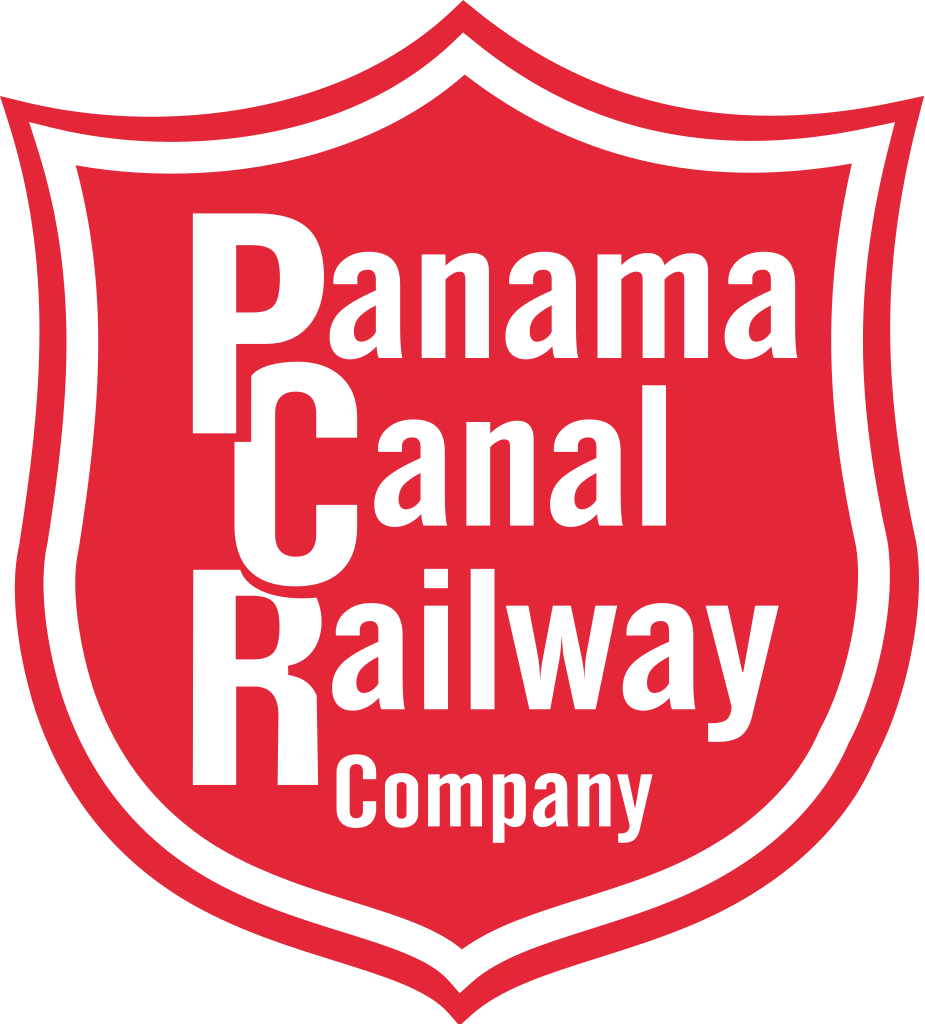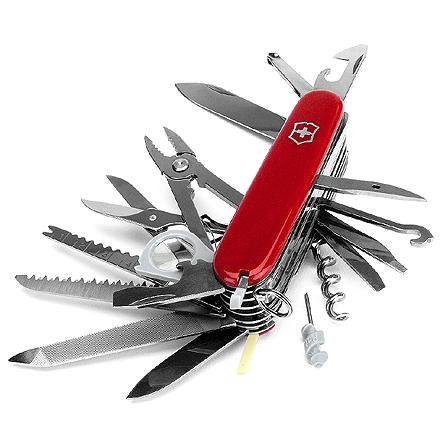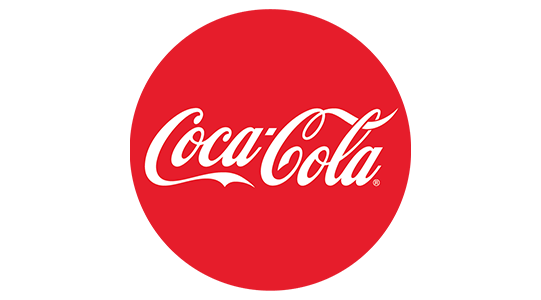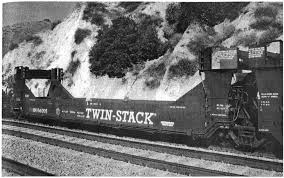Specific Item Information: 5-Unit articulated well car.
Model Information: This product from Deluxe Innovations features 5-unit articulated double-stack well cars for container transportation. Note the distinctive bulkhead ends of these cars.
Prototype History: A well car, also known as a double-stack car or stack car (also well wagon), is a type of railroad car specially designed to carry intermodal containers (shipping containers) used in intermodal freight transport. The "well" is a depressed section which sits close to the rails between the wheel trucks of the car, allowing a container to be carried lower than on a traditional flatcar. This makes it possible to carry a stack of two containers per unit on railway lines (double-stack rail transport) wherever the loading gauge assures sufficient clearance. The top container is secured to the bottom container either by a bulkhead built into the car (e.g., bottom and top containers are the same dimensions of 40 ft.), or through the use of inter-box connectors (IBC). Four IBCs are needed per wellcar. In the process of an inbound train becoming an outbound train, there are four processes: unlock to unload the top container of inbound train, remove then unload bottom container, insert after loading bottom container of outbound train, lock after top container loaded.
Double-stack container trains first hit the rails for regular service in 1981. The Southern Pacific Railroad had developed the idea to provide service for the Sea- Land maritime shipping company. SP's pioneering double-stack service let Sea- Land's containers take a shortcut from the west coast to the Gulf of Mexico bypassing the Panama Canal. From prototype car to production order, the SP spent a little over four years on the double-stack development project. The SP's double-stack cars featured unwieldy bulkheads on each end to prevent the loose top container from blowing off of the car.
The support for the upper container came from inter-box connectors (IBCs) which had been used for years in oceangoing container shipping.
The Twin-Stack was the first entry of Gunderson into the well-car market. It was introduced in 1985. The car had 40-foot wells and can carry 45-foot container in the top end positions, but only 40-foot containers in the intermediate positions. Gunderson updated the design by removing the bulkheads to create the Maxi-Stack (later renamed Maxi-Stack I).
Double-stack container trains first hit the rails for regular service in 1981. The Southern Pacific Railroad had developed the idea to provide service for the Sea- Land maritime shipping company. SP's pioneering double-stack service let Sea- Land's containers take a shortcut from the west coast to the Gulf of Mexico bypassing the Panama Canal. From prototype car to production order, the SP spent a little over four years on the double-stack development project. The SP's double-stack cars featured unwieldy bulkheads on each end to prevent the loose top container from blowing off of the car.
The support for the upper container came from inter-box connectors (IBCs) which had been used for years in oceangoing container shipping.
The Twin-Stack was the first entry of Gunderson into the well-car market. It was introduced in 1985. The car had 40-foot wells and can carry 45-foot container in the top end positions, but only 40-foot containers in the intermediate positions. Gunderson updated the design by removing the bulkheads to create the Maxi-Stack (later renamed Maxi-Stack I).
Road Name History:  The Panama Canal Railway (Spanish: Ferrocarril de Panamá) is a railway line linking the Atlantic Ocean to the Pacific Ocean in Central America. The route stretches 47.6 miles (76.6 km) across the Isthmus of Panama from Colón (Atlantic) to Balboa (Pacific, near Panama City). Opened in 1855, the railway preceded the Panama Canal by half a century; the railway was vital in assisting the construction of the canal in the early 1900s. With the opening of the canal, the railroad's route was changed as a result of the creation of Gatun Lake, which flooded part of the original route. Following World War II, the railroad's importance declined and much of it fell into a state of neglect until 1998, when a project to rebuild the railroad to haul intermodal traffic began; the new railroad opened in 2001.
The Panama Canal Railway (Spanish: Ferrocarril de Panamá) is a railway line linking the Atlantic Ocean to the Pacific Ocean in Central America. The route stretches 47.6 miles (76.6 km) across the Isthmus of Panama from Colón (Atlantic) to Balboa (Pacific, near Panama City). Opened in 1855, the railway preceded the Panama Canal by half a century; the railway was vital in assisting the construction of the canal in the early 1900s. With the opening of the canal, the railroad's route was changed as a result of the creation of Gatun Lake, which flooded part of the original route. Following World War II, the railroad's importance declined and much of it fell into a state of neglect until 1998, when a project to rebuild the railroad to haul intermodal traffic began; the new railroad opened in 2001.
Today it is operated as Panama Canal Railway Company (reporting mark: PCRC). Since 1998 it has been jointly owned by Kansas City Southern and Mi-Jack Products and leased to the government of Panama. The Panama Canal Railway is primarily dedicated to freight transport, but it also operates a passenger service between Panama City and Colón.

Today it is operated as Panama Canal Railway Company (reporting mark: PCRC). Since 1998 it has been jointly owned by Kansas City Southern and Mi-Jack Products and leased to the government of Panama. The Panama Canal Railway is primarily dedicated to freight transport, but it also operates a passenger service between Panama City and Colón.
Brand/Importer Information: DeLuxe Innovations is a "wholesale manufacturer" of model trains. We manufacture scale replica train models and sell them to hobby shops and distributors worldwide. 2013 marked the 20 year anniversary of DeLuxe Innovations brand trains. There are over 25 body styles in our product line and all of the cars in our single and multi-car packs have different road numbers. DeLuxe Innovations, Inc. is owned by Dave Ferrari, founder of Squeak N Products. We are located in Midland Park, New Jersey. When Dave purchased the business it was located in Burbank, California which would have been a bit of a long commute so the move to the East Coast was planned. Our first East Coast location was in Whippany, NJ along the Whippany River.
The business was started in 1993 by George Johnsen and Roberta Liebreich in Burbank, California. They had a philosophy that just wouldn't allow using a coal car as a "stand in" for a woodchip car, or printing any and all boxcar paint schemes on a PS-1. Starting with the release of the first ever etched metal parts for a ready to run car (1994's Twinstack's metal walkways) through the full dimension underframe and etched metal roofwalk (1996's 1944 AAR Boxcar) to the challenging RoadRailer system (2000), our products have been accurate to target the modeler or enthusiast.
You can also follow DeLuxe on Twitter
The business was started in 1993 by George Johnsen and Roberta Liebreich in Burbank, California. They had a philosophy that just wouldn't allow using a coal car as a "stand in" for a woodchip car, or printing any and all boxcar paint schemes on a PS-1. Starting with the release of the first ever etched metal parts for a ready to run car (1994's Twinstack's metal walkways) through the full dimension underframe and etched metal roofwalk (1996's 1944 AAR Boxcar) to the challenging RoadRailer system (2000), our products have been accurate to target the modeler or enthusiast.
You can also follow DeLuxe on Twitter
Item created by: Powderman on 2018-11-04 14:18:00. Last edited by gdm on 2021-03-02 11:29:29
If you see errors or missing data in this entry, please feel free to log in and edit it. Anyone with a Gmail account can log in instantly.
If you see errors or missing data in this entry, please feel free to log in and edit it. Anyone with a Gmail account can log in instantly.










